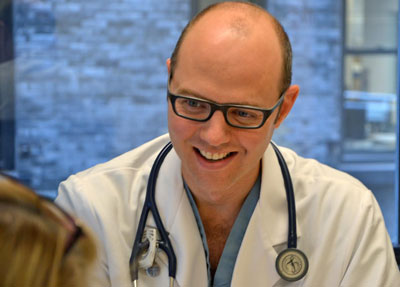Your ‘gut’ is comprised of multiple components, and is one of the few parts of your body that has direct contact with the environment. If you were to follow your food, it would begin in your mouth, continue down your esophagus, into your stomach, through three segments of the small intestine, and on to your large intestine before egressing. You will have absorbed the necessary water and nutrients your body needs to thrive and, perhaps, some of the elements and carcinogenic chemicals that eventually could lead to its demise.
Your small intestine alone is approximately 23 feet long, while your large intestine is about five feet long (though much wider). Hidden in this highly absorptive surface is also 80% of your immune system. An impressive and efficient machine, it is one of our greatest lines of defense. In our ever-busier lives, it is often taken for granted – we shop and cook for convenience without a true consideration for what we’re actively placing in our bodies. Pausing to consider the impact of our choices is more important now than ever. We live in a world with food packages that have a myriad of unknown and unpronounceable ingredients. The impact that our gut health has on the rest of our body is immense. It’s also pretty fascinating when you take the time to break it down.
To learn a bit more about our guts, we sat down with Dr. David Robbins, a board-certified gastroenterologist currently practicing at Lenox Hill Hospital. At Lennox Hill, he serves as fellowship director for the gastroenterology training program and medical director for Manhattan’s largest endoscopy center. Dr. Robbins has been repeatedly recognized throughout his distinguished career as a Top Doctor by Castle Connolly, as well as a Best Doctor by New York Magazine. He has trained at some of the most distinguished medical centers in the world, received multiple awards, and has treated thousands of patients. Dr. Robbins is a member of the Summus Medical Advisory Board.
Jennifer Kherani: Why did you decide upon Gastroenterology (GI) as a career path?
David Robbins: Like most good stories, it began as a chance event. As a fourth year medical student, I wanted to travel to San Francisco for one of my rotations. The only spot available at UCSF was in GI. The location and timing worked so I accepted it blindly. My first day of the rotation happened to coincide with the new GI fellows’ first day. They were learning endoscopy. I recall it being a dark room with video screens filled with individuals learning, having fun and helping others. I knew it was a personality fit right there. While in residency, my father was diagnosed with esophageal cancer and that made the field much more personal. I “fast tracked” out of my Internal Medicine residency and into GI fellowship as a third year resident. Now I focus on clinical work but I’m also the fellowship program director and I genuinely enjoy both the clinical practice of medicine as well as teaching. My focus is in advanced endoscopy and early cancer detection and treatment.
JK: What have you learned in developing your expertise for early cancer detection, and how do you translate this into your clinical practice?
DR: The prevention of cancer fascinates me. Early detection, quality improvement, cost containment and leadership efforts in the war on cancer are key. We currently fall short on prevention. There has been a large public effort aimed at colonoscopy outreach and education. However, only approximately 50% of people who should be tested are actually getting screened, let alone making it into the procedure room. I am interested in low cost, high impact efforts to reach a larger patient population to make early detection a powerful guard against cancer. That said, colonoscopy is not the future of cancer prevention. It’s expensive and the capacity nationwide to screen broadly will never be there. We have long needed something easier and less invasive to truly reach patients on a large scale. There is now a stool-based genetic test available. It is home-based and gets sent off to the lab. It is as accurate as a colonoscopy for cancer detection (but not for detecting polyps, which are the precursor lesions). There are some false positive results. However, it allows for (much less invasive) identification of those individuals who really should undergo traditional colonoscopy. Cost is another factor or consideration. A colonoscopy costs approximately $1500 and needs to be done every 10 years. Stool DNA costs about $500 but needs to be done every 3 years, thereby making it slightly more expensive than colonoscopy (at least currently), but this can and likely will change in the not too distant future as these DNA-based tests both improve and decrease in cost.
JK: How strongly do our diets affect our risk of gastrointestinal cancers and what is your best advice for maintaining gut health?
DR: There is no question that our diet affects our cancer risk. Food directly touches and impacts our stomachs and bowels. The CDC recently classified processed red meat as a class I carcinogen. We, as a country, eat a lot of it and it shows in our risk for and prevalence of colon cancer cases. If we look at other dietary models, such as the Mediterranean diet, red meat is consumed once or twice a month and that red meat is high quality, non-processed beef. Added sugars are minimized and there is an abundance of fruits, vegetables, seeds, nuts, fish, other seafood and extra virgin olive oil. That’s not to say that there is no cancer in that region of the world. However, when we look at immigrant populations, they have a lower risk…until they move here. Diet has a direct impact on our intestinal health and cancer risk. It’s not just red meat either. Overly barbecued or blackened chicken contains nitrosamines, which increase the risk of developing esophageal cancer. We need to be smart about what we place in direct contact with our bodies.
JK: What is the next technological or medical advancement in gastroenterology?
DR: From an epidemiological standpoint, it would have to be DNA-based assays that do not require the extensive bowel preparation and sedation, as colonoscopies do. Eventually these screening tests will be used broadly and preventatively as a standardized screening method. We will still have to perform endoscopies and colonoscopies. However, we will not be doing them with the frequency which we do now. In the future, we’ll only be doing them for histology and direct tissue sampling for healthy 50 years-olds who have had positive genetic screen testing. We can already start to assess disease activity using stool markers for conditions like Crohn’s disease. You could potentially use this type of non-invasive testing for various diseases, such as lung cancer, where we see solid tumor that shed their cells and find their way into the stool. This type of testing will help us to improve our screening technique, lessen the invasiveness of testing and hopefully, in doing so, reach more people. We can thereby prevent cancer or detect it earlier, when it is potentially curable.
JK: What has been your most interesting or memorable case?
DR: I don’t have one specific patient or case in mind. I am always being surprised. Many patients come to me with very vague symptoms. We try to follow evidence-based guidelines and algorithms for how to investigate them. Occasionally you have to veer from those guidelines and use your judgment — and you find something completely unexpected. It flies in the face of these well thought out, researched guidelines. Those cases are always unnerving. For example, colon cancer screening starts at 50, but we’re seeing more cases of younger patients with this diagnosis. We’ll miss them with our current screening guidelines. These cases make me ponder the best way to adhere to guidelines while retaining a reasonable clinical suspicion yet not burdening patients with unnecessary tests and of course costly bills. The Affordable Care Act does and should cause us to be cost-conscious. But I want to make sure I don’t miss a diagnosis for the sake of being thrifty. This is a lot to consider during a 12 minute patient encounter. The impact that these young patients with incurable cancer has on me will not fade, and drives the war on cancer.






